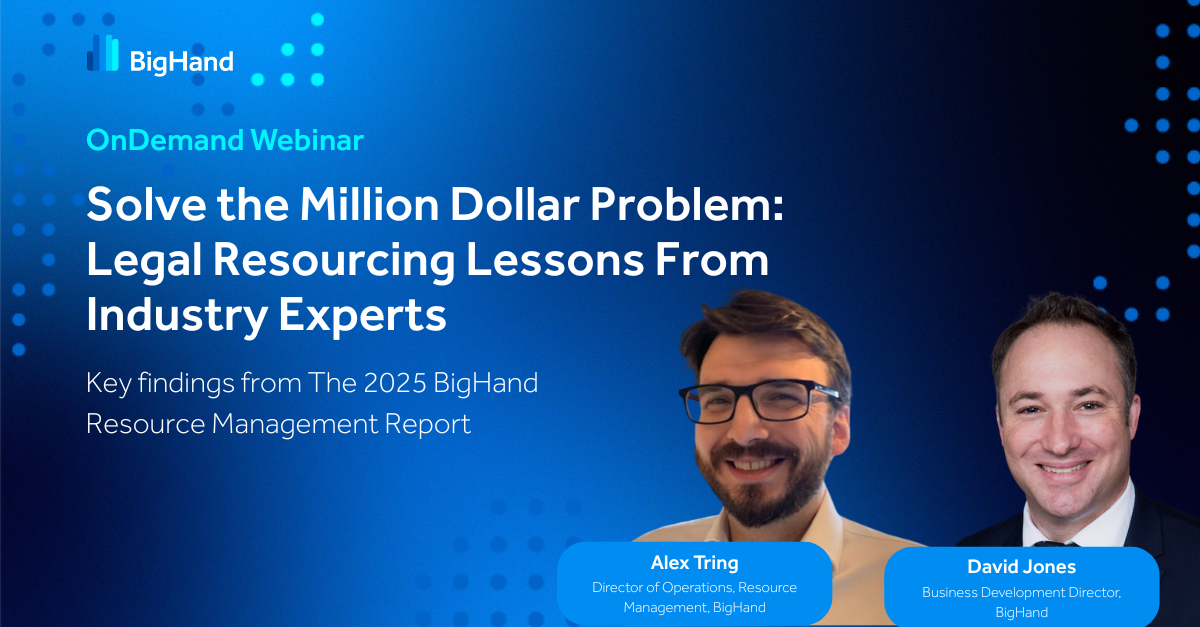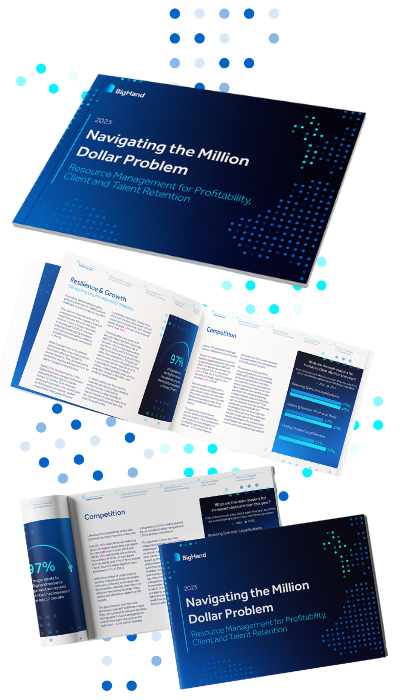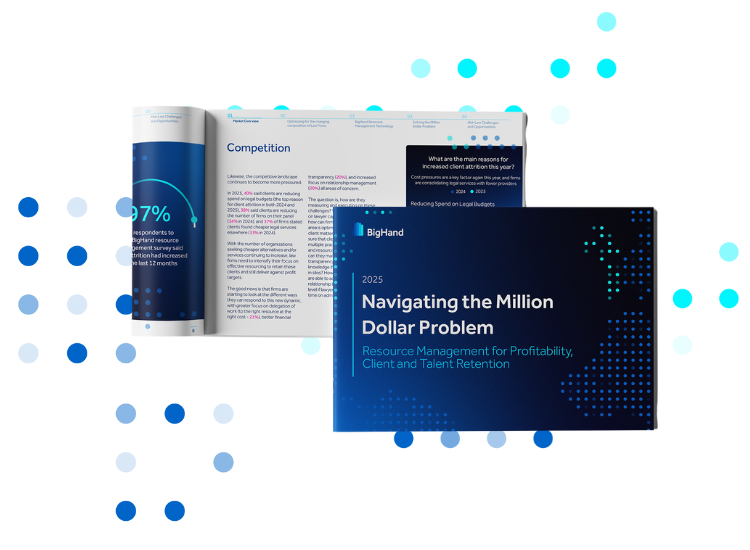
Experts unpack the 2025 BigHand Resource Management Report
Learn how to tackle lawyer attrition, fix visibility gaps, and protect client relationships in a market where time, talent, and trust are at stake.
_____________________

Associate industry departures has significantly increased, reaching 16% for juniors and 17% for seniors.

43% of firms depend on lawyer-led decisions; 37% base staffing on preference, not skills or capacity.

Only 45% of firms have partial insight into associate skillsets, and just 40% of firms track work allocation.

97% of firms report more client attrition, often linked to spending cuts and new provider choices.
Law firms face mounting demands, higher client expectations, tighter margins, and the ongoing challenge of retaining top talent. Strategic legal resource management and effective law firm workforce planning are now essential for continued success.
Why This Report Matters
The 2025 Resource Management Report delivers industry insights from 800+ senior legal professionals, highlighting pressing challenges:
What You’ll Learn
The Bottom Line
Data-driven strategies are key to increasing legal operations efficiency and achieving sustainable profitability. This report reveals where firms are falling behind and what steps can drive lasting improvement. Explore the findings to understand why visibility, planning, and action are vital for your firm’s future.

Legal resource management refers to how law firms allocate work based on lawyer availability, skillsets, attorney utilization rates, and long-term development goals. It plays a central role in law firm succession planning, helping firms align talent with demand while improving operational efficiency, workload balance, reducing burnout, and improving profitability and retention. In most firms, this process is still manual or partner-led, lacking structure or transparency.
Firms face rising attrition due to factors including overwork, limited career progression, lack of visibility into skills, and poor work allocation. In 2025, attrition among senior associates and partners reached 27%, with work-life balance (20%) and hybrid working (22%) among the top reasons cited. Without equitable work allocation and clear legal talent retention strategies, firms struggle to retain mid-level associates, and risk weakening their future leadership pipeline.
Top causes in 2025 included:
Associates are also increasingly leaving the profession or moving in-house. Lack of structured career paths and uneven workloads contribute heavily to dissatisfaction and exit decisions, putting law firm retention and succession planning at risk.
The estimated cost of legal attrition of losing a third-year associate now exceeds $1 million. This includes lost billable revenue, recruitment and training expenses, and disruption to client relationships. High turnover also damages long-term planning by weakening the firm’s leadership pipeline and increasing pressure on remaining staff.
Improving utilization starts with visibility. Currently, only 49% of firms have full visibility into capacity, and even fewer (34%) use that data for proactive planning. Improving attorney utilization rates requires:
These improvements increase productivity, support talent development, and protect law firm profitability.
Firms can strengthen legal talent retention by focusing on career development, workload fairness, and flexibility improved retention. In 2025:
By investing in smarter resource management, firms can retain mid-level associates and support long-term growth, without relying solely on pay increases.

Learn how to tackle lawyer attrition, fix visibility gaps, and protect client relationships in a market where time, talent, and trust are at stake.

See how real-time visibility and smarter delegation reduce burnout, grow talent, save hours, and drive stronger outcomes.
BigHand conducts this research to give law firm leaders the data and insights they need to improve legal operations efficiency, reduce attrition risk, and strengthen workforce strategy. This research highlights the true impact of fragmented resource allocation, gaps in planning, and missed opportunities to drive sustainable law firm profitability. With the right tools, like BigHand Resource Management, firms can turn those insights into smarter planning, stronger teams, and better financial outcomes.
